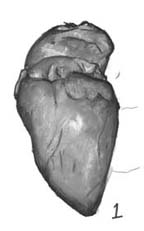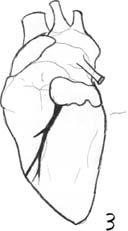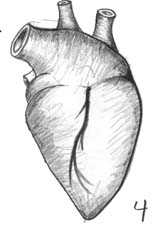
 |
Many say a picture is worth a thousand words. In anatomy, this statement is certainly true. With his anatomical drawings, Leonardo had revolutionized anatomical studies and modern science in general. Today, one can see tons of diagrams printed in medical textbooks, but before Leonardo, generally speaking there were none. Aristotle wrote about tendons and ligaments, and Galen performed dissections of wild beasts in front of large crowds. However, there are not any records of pictorial representation. Leonardo, as we are about to discuss, changed this, when he started to be interested in what lay beneath the skin that gave the human body its shape and even life. Obviously, by comparing how a heart truly looks like( from our pictures) to how Leonardo depicted a heart, we can tell that Leonardo did not draw the heart exactly as he saw it. It was very probable that the heart Leonardo observed was covered with other remnants of the body, and was torn apart sufficiently in the process of getting to the heart itself. Truly, from what we have seen, the heart doesn’t even look like what Leonardo depicted, its surface is rough and complicated, and sinewy things extend in the interior and periphery parts. The veins that Leonardo drew seemed outside of the heart’s surface, but in reality, they are embedded in the heart’s tissue. The tubes that Leonardo depicted as perfectly round, are not, but instead collapse soon as they are cut. I first did two “realist”
drawings of the heart that lay below. Soon, I figured out that the drawings
I had made(image #1 and #2) just seemed like two clumps. I decided to
try to draw a diagram that might be more informative about the form and
function of the heart. Even though the two diagram drawings(#3 and 4)
had much less toning and features, they actually provided a better view
in order to offer information. Leonardo, of course, provided much more
detail in his pictures than images #3 and 4, but he still simplified his
subject.
|
 |
 |
 |
 |